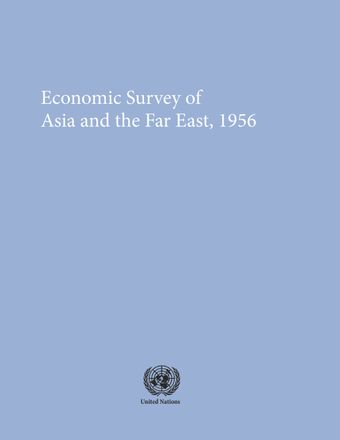Viet-Nam

- Author: United Nations Economic and Social Commission for Asia and the Pacific
- Main Title: Economic and Social Survey of Asia and the Far East 1956 , pp 169-174
- Publication Date: December 1956
- DOI: https://doi.org/10.18356/e0dbef23-en
- Language: English
In 1956 southern Viet-Nam began to emerge from the difficulties of the post-war period; for the first time it was in a position to take in hand the problem of economic development. In 1955, conditions of insecurity had prevented some areas from contributing to the economic advantage of the country as a whole. The arrival in southern Viet-Nam of about 900,000 refugees had brought crucial problems to a country with a total population of 11 million. By 1956, however, a substantial number of refugees had been resettled and, while many problems were still to be solved in this respect, they were no longer of such a magnitude as to threaten the stability of the country’s economy. The Government was able to counteract potential inflationary pressure arising from money brought and spent by refugees, expenditures of the French expeditionary forces, new investments and the relative scarcity of rice. Prices rose, but only moderately. Thus, substantial progress had been achieved by 1956, and at the same time a number of major problems remained to be solved before the country could attain economic equilibrium, stabilize the cost of living and rely on its own resources.
-
From This Site
/content/books/9789210599351s003-c017dcterms_title,dcterms_subject,pub_keyword-contentType:Journal -contentType:Contributor -contentType:Concept -contentType:Institution105


